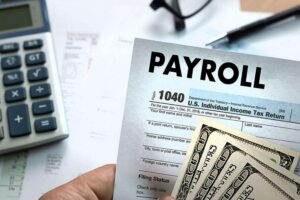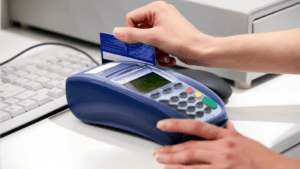9 2 Account for Uncollectible Accounts Using the Balance Sheet and Income Statement Approaches Principles of Accounting, Volume 1: Financial Accounting

Then, make sure to calculate and record any accrued interest that has accumulated since issuing the note. This can be done by multiplying the principal amount by the annual interest rate and dividing it by 12 months for monthly payments. The note has now been completely paid off, and ABC has recorded a total of $246 in interest income over a three-month period. The outstanding balance of $2,000 that Craft did not repay will remain as bad debt. For comparison, in the fourth quarter of 2021 Apple Inc. had a turnover ratio of 13.2.

¨ A
retailer’s acceptance of a national credit card is another form of
selling—factoring—the receivable by the retailer. ¨ If the lender expects that it will eventually be
able to collect, the Notes Receivable account is transferred to an Account
Receivable for both the face value of the note and the interest due. ¨ The interest rate specified on the note is an
annual rate of interest. The time factor
in the computation expresses the fraction of a year that the note is
outstanding.
Boundless Accounting
He currently researches and teaches economic sociology and the social studies of finance at the Hebrew University in Jerusalem. Additionally, if borrowers default on their loans it can create significant financial losses for lenders who have invested in these notes. Next, record the details of the note such as the name of the debtor, date of issuance, maturity date or due date, interest rate if applicable and principal amount.

You might want to give them a call and talk to them about getting their payments back on track. For example, let’s say that after a few months of waiting, calling him on his cellphone, and talking to his family members, it becomes clear that Keith has disappeared and isn’t going to pay that $500 invoice you sent him. Entities that anticipate prepayments in applying the interest method shall disclose that policy and the significant assumptions underlying the prepayment estimates. ¨ Approximately one billion credit cards were
estimated to be in use recently. A
common type of credit card is a national credit card such as Visa and
MasterCard.
What are examples of receivables?
Notes Receivable are an asset as they record the value that a business is owed in promissory notes. A closely related topic is that of accounts receivable vs. accounts payable. Consequently, officials for Dell Inc. analyzed the company’s accounts receivable as of January 30, 2009, and determined that $4.731 billion was the best guess as to the cash that would be collected. The actual total of receivables was higher than that figure but an estimated amount of doubtful accounts had been subtracted in recognition that a portion of these debts could never be collected.
It represents a promise of payment from a customer or client and can have advantages and disadvantages depending on the situation. As the holder of the note, your business acts as a creditor and has the right to receive payments from the debtor over time. The borrower must sign this legally binding document which outlines all repayment details such as interest rates and payment schedules. The difference between notes receivable and traditional loans is that banks do not make these loans directly to borrowers. Instead, they sell them to investors and institutions who purchase them as investments.
Terms Similar to Notes Receivable
So far, our discussion of receivables has focused solely on accounts receivable. Companies, however, can expand their business models to include more than one type of receivable. This receivable expansion allows a company to attract a more diverse clientele and increase asset potential to further grow the business.
ICYMI Accounting for Unsubmitted Grant Reimbursement Claims … – The CPA Journal
ICYMI Accounting for Unsubmitted Grant Reimbursement Claims ….
Posted: Wed, 05 Jul 2023 07:00:00 GMT [source]
Accounting for notes receivable can be burdensome and error-prone if approached manually. Notes receivable are assets on a payee’s books that represent principal owed to them. Notes payable are the corresponding liabilities on a maker’s books, also in the amount of outstanding principal. The business entity doing the lending has a note receivable and the entity doing the borrowing has a note payable.
Example of Notes Receivable Accounting
Often, a business will allow customers to convert their overdue accounts (the business’ accounts receivable) into notes receivable. A company lends one of its important suppliers $10,000 and the supplier gives the company a written promissory note to repay the amount in six months along with interest at 8% per year. The company will debit its current asset account Notes Receivable for the principal amount of $10,000.
- Like all assets, debits increase notes receivable and credits reduce them.
- As a trade-off for agreeing to slower payment, payees charge interest and require a signed promissory note.
- The business entity doing the lending has a note receivable and the entity doing the borrowing has a note payable.
- ¨ Interest Revenue is shown under “Other Revenues
and Gains” in the nonoperating section of the income statement. - Notes receivable typically arise when a company makes sales on credit or loans money to another person.
Clearly, the reporting of receivables moves the coverage of financial accounting into more complicated territory. In the transactions and events analyzed previously, uncertainty was rarely mentioned. The financial impact of signing a bank loan or the payment of a salary can be described to the penny except in unusual situations. Here, the normal reporting of accounts receivable introduces the problem of preparing statements where the ultimate outcome is literally unknown. The very nature of such uncertainty forces the accounting process to address such challenges in some logical fashion.
b) filings need to done on time for Co-founders of startups.
Access and download collection of free Templates to help power your productivity and performance. Harold Averkamp zoho books review (CPA, MBA) has worked as a university accounting instructor, accountant, and consultant for more than 25 years.
Wage advances, formal loans to employees, or loans to other companies create other types of receivables. If significant, these nontrade receivables are usually listed in separate categories on the balance sheet because each type of nontrade receivable has distinct risk factors and liquidity characteristics. Examples of notes receivable include employee cash advances with a written promise to pay and uncollected trade accounts receivable (sales owed to a company on credit) converted into promissory notes. Notes receivable are debts that are due to the business from its customers. These can include promissory notes, open accounts or any other types of trade receivables. Notes receivable are usually recorded on the balance sheet as assets and are marked down to their present value.
When a company owes debts to its suppliers or other parties, these are accounts payable. To illustrate, imagine Company A cleans Company B’s carpets and sends a bill for the services. Company B owes them money, so it records the invoice in its accounts payable column. Company A is waiting to receive the money, so it records the bill in its accounts receivable column. Accounts receivable (AR) are the balance of money due to a firm for goods or services delivered or used but not yet paid for by customers.
A factor is a finance company or a bank
that buys receivables from businesses for a fee and then collects the payments
directly from the customers. ¨ If a company has significant risk of
uncollectible accounts or other problems with receivables, it is required to
discuss this possibility in the notes to the financial statements. ¨ The allowance
method of accounting for bad debts involves estimating uncollectible
accounts at the end of each period.
If you can’t contact your customer and are convinced you’ve done everything you can to collect, you can hire someone else to do it for you. A quick glance at this schedule can tell us who’s on track to pay within 30 days, who’s behind schedule, and who’s really behind. ¨ Interest Revenue is shown under “Other Revenues
and Gains” in the nonoperating section of the income statement. ¨ Credit losses are debited to Bad Debt Expense (or Uncollectible Accounts Expense). Despite these risks and challenges, many businesses continue to use Notes Receivable as part of their overall procurement strategies because they offer certain benefits over other types of financing arrangements.
The balance sheet aging of receivables method estimates bad debt expenses based on the balance in accounts receivable, but it also considers the uncollectible time period for each account. The longer the time passes with a receivable unpaid, the lower the probability that it will get collected. An account that is 90 days overdue is more likely to be unpaid than an account that is 30 days past due.
Item 506 of Regulation S-K requires presentation of the dilutive effects of those issuances on net tangible book value. The effects of dilutive issuances on the registrant’s liquidity, capital resources and results of operations should be addressed in Management’s Discussion and Analysis. Receivables of all types are normally reported on the balance sheet at their net realizable value, which is the amount the company expects to receive in cash. Before deciding whether or not to hire a collector, contact the customer and give them one last chance to make their payment.


